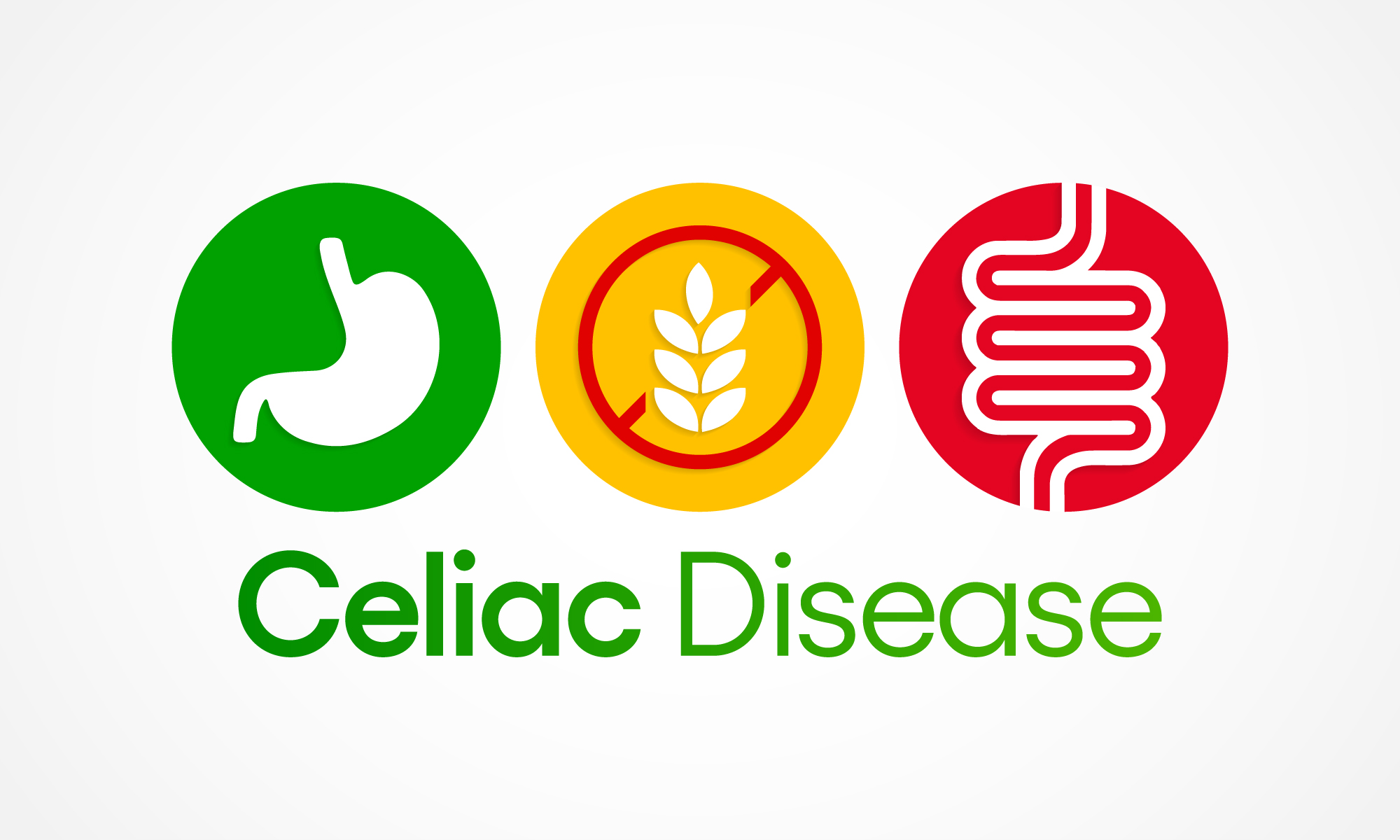


Celiac disease is a digestive and autoimmune disorder that can damage your small intestine. People with celiac disease might experience symptoms like diarrhea, bloating, gas, anemia and growth issues. Celiac disease is triggered by a protein called gluten. Gluten can be found in grains such as wheat, barley, and rye. Changing your diet to avoid gluten can sometimes relieve your symptoms.
Celiac disease is a serious immune-mediated disorder that may affect the digestive and multiple organs. The condition is triggered by gluten, which is a protein found in grains such as wheat, barley, and rye.
Celiac disease and non-celiac gluten sensitivity (NCGS) – What’s the Difference
Celiac disease causes damage to the small intestine. By identifying specific markers in the blood, a diagnosis can be confirmed with more ease. Non-celiac gluten sensitivity - also known as NCGS - is not as easily diagnosed due to the lack of any specific markers in the blood, and needs improvement of symptoms after following a diet without gluten.
Celiac disease symptoms can vary greatly, and a person may experience a number of intermittent symptoms. You can experience other symptoms, such as digestive issues, if you have celiac disease. Children have digestive issues more frequently than adults do. Celiac disease's digestive symptoms can include
If you mistakenly consume something that includes gluten and have celiac disease, you may have the following symptoms:
The following digestive issues are more prevalent in children with celiac disease:
Among the issues that a child may have if celiac disease prevents their body from getting the nutrients they require are:
Gluten intolerance runs in families. If a person's parent or sibling has celiac disease, they have a one in 22 risk of also getting it, according to the research.
The likelihood of developing celiac disease is also increased in those with other autoimmune diseases and specific genetic conditions. The following are a few ailments connected to celiac disease:
The immune system of the body is typically created to defend it against forein invaders. Gluten-containing foods cause the immune systems of persons with celiac disease to attack the lining of the intestine. This inflames (swells) the intestines and kills the villi, the hair-like structures that line the small intestine. The villi take in nutrients from meals. No matter how much food a person eats, if the villi are injured, they cannot absorb nutrients and become malnourished.
Your healthcare professional will do a thorough physical examination and talk with you about your medical history if they suspect you may have celiac disease. To determine the level of gluten-antibodies, the doctor may also perform a blood test. Certain antibodies are seen in greater concentrations in the blood of people with celiac disease. It may occasionally be essential to have a blood test for celiac disease.
Other tests, such a blood test to check iron levels, may be carried out by your doctor to check for nutritional deficiencies. With celiac disease, there may be an iron deficiency, which can lead to anaemia.
To check for villi damage, your doctor could take a biopsy from your small intestine. An endoscope (a short, hollow tube) is inserted via your mouth into your small intestine during a biopsy in order to collect a sample of the intestine. To prevent any pain during the treatment, sedation or anaesthetic is used.
In order to support a diagnosis, doctors will also carry out a number of tests. Anti-tissue transglutaminase (tTGA) and anti-endomysium (EMA) antibodies are frequently found in high concentrations in celiac disease patients. Blood tests can be used to find these. When tests are run when gluten is still present in the diet, they are most accurate.
Common blood tests include:
You can't consume anything with gluten if you have celiac disease (including wheat, rye and barley). For formal diet guidance, you will be urged to see a dietician. Usually, eliminating gluten from your diet helps the condition within a few days and gradually gets rid of the disease's symptoms. The villi, however, typically take months to years to fully heal. Adults may need two to three years to mend their intestines, whereas children only need approximately six months.
You will require ongoing medical monitoring and be required to maintain this diet for the remainder of your life (typically at 3 months, 6 months, and then every year). Even a small amount of gluten can harm your intestine and cause the issue to recur.
You cannot eat several "staples," such as pasta, cereals, and many processed items that contain gluten, if you follow a gluten-free diet. Additionally, some medicines and additives added to food to enhance flavour or texture may contain gluten. Ice cream and salad dressing are two less obvious sources of gluten. Another frequent source of gluten is cross-contamination, which occurs when gluten-free items unintentionally come into contact with gluten.
You can still eat a healthy diet even if you have celiac disease. For instance, it is possible to find pasta and bread produced from other types of flour, such as potato, rice, maize, or soy. Additionally, several grocery stores and food firms sell bread and other items that are gluten-free.
Additionally, since these foods don't contain gluten, you can consume fresh meals that haven't been artificially processed, such fruits, vegetables, meats, and seafood.
Untreated, celiac disease can cause:
It's challenging to keep up a gluten-free diet. Thankfully, several businesses are now producing gluten-free goods, which can be discovered at numerous supermarkets and specialist food shops. These products will be labelled as "gluten-free."
Knowing which foods are safe if you have celiac disease is crucial. Here are some dietary recommendations to help you decide what to eat and what to avoid.
Foods to Avoid in Celiac Disease
Foods to Avoid in Celiac Disease unless the label says gluten-free:
Foods To Eat in celiac disease
Healthy, gluten-free foods include:
 Allergy Test
Allergy Test
 Anemia Test
Anemia Test
 Auto immune
Auto immune
 Blood disorder
Blood disorder
 Bone and Joint
Bone and Joint
 Cancer Test
Cancer Test
 Cardiology Test
Cardiology Test
 Covid Recovery
Covid Recovery
 Dengue Test
Dengue Test
 Depression
Depression
 Diabetes Test
Diabetes Test
 Fatigue
Fatigue
 Fever Test
Fever Test
 Full body
Full body
 Gastro Test
Gastro Test
 Gastrointestinal
Gastrointestinal
 Gynaecology Test
Gynaecology Test
 Heart Test
Heart Test
 HIV Test
HIV Test
 Hormone Test
Hormone Test
 Hypertension
Hypertension
 Immunity Test
Immunity Test
 Infectious Disease
Infectious Disease
 Infertility Test
Infertility Test
 Influenza Test
Influenza Test
 Iron Test
Iron Test
 Kidney Test
Kidney Test
 Liver Test
Liver Test
 Lung Test
Lung Test
 Nephrology
Nephrology
 Obesity
Obesity
 Orthopedics Test
Orthopedics Test
 Physician
Physician
 Pollution Health Checkup
Pollution Health Checkup
 Pregnancy Test
Pregnancy Test
 Prostate Test
Prostate Test
 Senior Citizen Test
Senior Citizen Test
 STD Test
STD Test
 Thyroid Test
Thyroid Test
 Tuberculosis Test
Tuberculosis Test
 Vitamin Test
Vitamin Test
 Women Health Test
Women Health Test